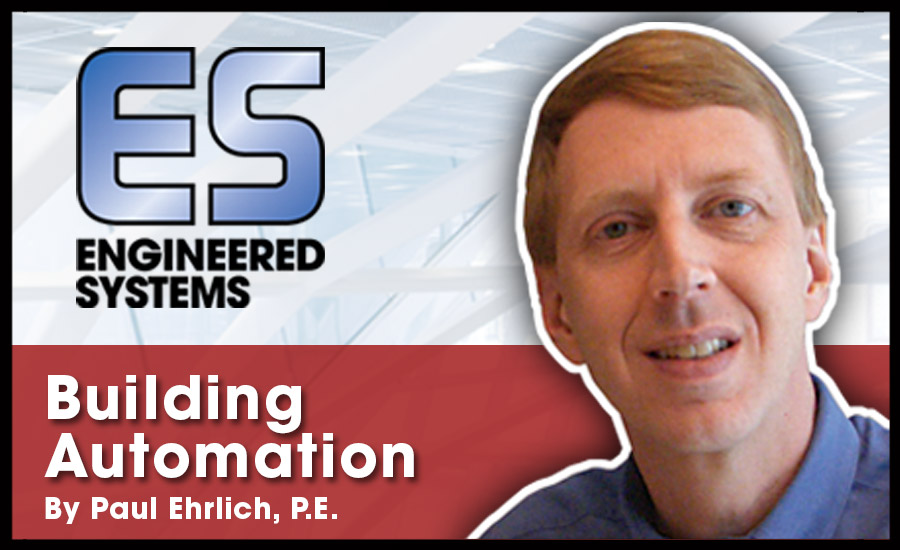As I complete my transition from leading a practice focused on the design of integrated control systems to focusing on research efforts, it is time to bid farewell to writing this monthly column. Beginning next month, my friend and colleague, Ira Goldschmidt, will take over. For those of you who are long-term readers, you may recall that Ira and I used to write this column together years ago. I will continue my involvement with Engineered Systems as an editorial advisor and hope to also find time to do a feature article from time to time.
Last month, I provided a look back at what has happened in the world of controls and automation over the last decade. This month, I want to take a look forward to what I envision needs to happen with building automation and controls over the next decade.
Controls system design
Good control systems start with a great design! Unfortunately, there are few tools available today for the controls systems designer, but this is about to change. For the last several years, there has been significant work going on in ASHRAE guideline 36, which has been defining high-performance control sequences. ASHRAE has also been sponsoring research projects to test and validate these sequences. New tools are now being developed that will allow you to compare and model sequences and then provide them to the controls contractor in an open, machine-readable format. This has the potential to allow us to develop more effective sequences and to simplify the work needed to deploy and test them in actual systems.
Systems architecture
Developments in the world of technology have brought down the cost of communications, memory, displays, and processing. This has enabled the movement of the “Internet of Things,” resulting in products that include communicating thermostats, voice control, and even internet-enabled light bulbs. Expect to see these technologies applied to future commercial control systems. What does that mean? Imagine a control system that consists of smart sensors and actuators, each of which is self-documenting and can readily communicate and configure with minimal intervention. Such a system would be integrated and web-enabled by design, and it could readily be optimized and include functions including analytics and fault detection. Such a future system would be able to measure its performance and optimize for comfort and energy usage.
Protocols and integration
While we have made incredible progress in terms of open protocols, there is still much work needed (and in progress) to make systems that contain information about what they do, where they are located, and how they are connected. This is often referred to as semantic, contextual, or meta data. Incorporating this semantic data into controllers will allow them to be more useful for systems operators and will enable systems with tools such as analytics or grid integration to become cheaper, easier, and more effectively applied.
Agent connectivity
Expect to see future systems integrated not only within the building (or campus) but also to be tightly integrated to the grid. This will allow buildings to have additional flexibility in how and when they use power, allowing for more cost effective operations. To enable this grid connection, as well as other services, future systems will need the ability to serve as application platforms. This means that just like your smart phone, you will be able to download and install applications (or “agents”) that will become part of your control system. These agents will help to allow systems to connect and also will provide the ability to “future proof” building systems, allowing owners to readily participate in new programs without having to replace current systems.
Systems performances
The use of smarter applications, including functions like self-tuning control loops, automated algorithms, and intelligent agents coupled with faster communications, processors, and more memory, will result in improved system performance. Think of it in terms of better, faster, and cheaper than what we are doing today. Of course, the other part of this improved performance is going to need to be increased protection for cybersecurity. Expect to see future controls components have a high level of security built into the hardware on all devices.
I expect to see big changes in controls over the next decade. This will be driven largely by technology that is available today. The end result is systems that are going to enable buildings to provide improved efficiency and comfort, and to become part of a new smart and integrated electrical grid. ES




